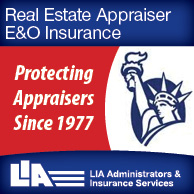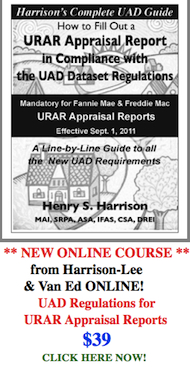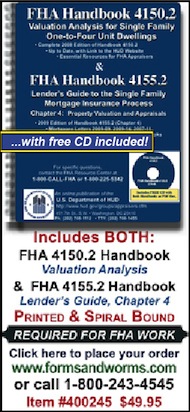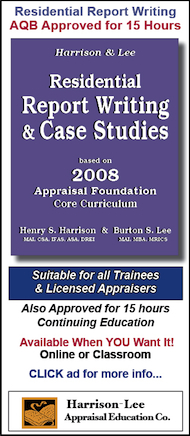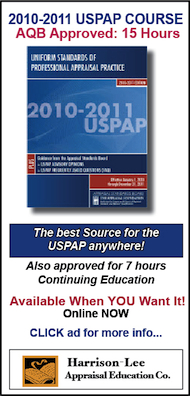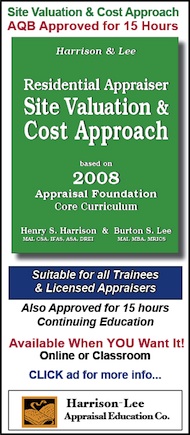Aug 2011
Editorial
08/04/11 Categories: Editorial
Editorial: The Debt Bill (Budget Control Act of 2011)
It is easy to become depressed when you follow the news these days.Unemployment seems to be stuck at a rate near 10%, millions of people are about to lose their homes by foreclosure, and the American dream of owning a home has turned into a nightmare for many Americans.
This past Tuesday, August 2, 2011, ends one of the most outrageous episodes of legislative nonsense I can remember. Our government shot itself in the foot -- inflicting an injury upon our economy and our people that will take years to heal. Recent polls show that the public's faith in their government has reached an all time low. This feeling crosses party lines and includes virtually every group polled. The selfish and self-serving behavior of too many of our so-called legislators is disgusting.
What in the past made America a great country was that the people believed in democracy and enjoyed the benefits of being free as a direct result of our democratic form of government. Hopefully, it will sink into the heads of voters of all persuasions that we want and need an effective government. Then we will wake up and through the power of the vote put into office people who will once again make our government function.
Having gotten that off my chest, let's examine what this Budget Control Act of 2011 did for housing and us real estate professionals. To answer this question, you need to look at the actual bill. Here is the URL: http://www.nytimes.com/interactive/2011/08/01/us/politics/debt-ceiling-bill-text.html?hp
You will see that the bill is just 74 pages and if you look carefully you will see at the top that there is a search function. Try it out by typing in the word "budget" and see what happens. The result is that it appears 35 times, and each time is shaded yellow. Now try "Housing". Guess what? The word "Housing" does not appear anywhere in the 74 pages. Try "mortgage". Same result. Try "foreclosure". Struck out again. No results for "taxes" either.
The bottom line is that the government officials -- the President, the House and the Senate -- continue to ignore the best way to jump start the economy and create millions of jobs: fix up all the foreclosed houses and sell or rent them.
I invite you (if you haven't already done so) to read my Editorial in the June 2011 Issue of REV, entitled "Economics: How to Solve Housing Market Chaos & Help Relieve Unemployment." [Click on the highlighted word "Editorial" at the top of this paragraph to go there.]
It is easy to become depressed when you follow the news these days.Unemployment seems to be stuck at a rate near 10%, millions of people are about to lose their homes by foreclosure, and the American dream of owning a home has turned into a nightmare for many Americans.
This past Tuesday, August 2, 2011, ends one of the most outrageous episodes of legislative nonsense I can remember. Our government shot itself in the foot -- inflicting an injury upon our economy and our people that will take years to heal. Recent polls show that the public's faith in their government has reached an all time low. This feeling crosses party lines and includes virtually every group polled. The selfish and self-serving behavior of too many of our so-called legislators is disgusting.
What in the past made America a great country was that the people believed in democracy and enjoyed the benefits of being free as a direct result of our democratic form of government. Hopefully, it will sink into the heads of voters of all persuasions that we want and need an effective government. Then we will wake up and through the power of the vote put into office people who will once again make our government function.
Having gotten that off my chest, let's examine what this Budget Control Act of 2011 did for housing and us real estate professionals. To answer this question, you need to look at the actual bill. Here is the URL: http://www.nytimes.com/interactive/2011/08/01/us/politics/debt-ceiling-bill-text.html?hp
You will see that the bill is just 74 pages and if you look carefully you will see at the top that there is a search function. Try it out by typing in the word "budget" and see what happens. The result is that it appears 35 times, and each time is shaded yellow. Now try "Housing". Guess what? The word "Housing" does not appear anywhere in the 74 pages. Try "mortgage". Same result. Try "foreclosure". Struck out again. No results for "taxes" either.
The bottom line is that the government officials -- the President, the House and the Senate -- continue to ignore the best way to jump start the economy and create millions of jobs: fix up all the foreclosed houses and sell or rent them.
I invite you (if you haven't already done so) to read my Editorial in the June 2011 Issue of REV, entitled "Economics: How to Solve Housing Market Chaos & Help Relieve Unemployment." [Click on the highlighted word "Editorial" at the top of this paragraph to go there.]
Sound Off!
08/03/11 Categories: Sound Off
Dear Henry,
I see some merit to your proposed solution to the housing industry crisis (June 2011 Editorial). I just do not give it much hope. There are too many powerful lobbies that would rather just suck off the taxpayers while they sail to the Hamptons in their newly redecorated yachts.
I am sorry to say that the lessons that should have been learned from the RTC back in the mid-1980s were soon forgotten like a bad dream. The exuberance of lessened oversight allowed a new class of lenders that have brought back the dream as a recurring nightmare. The cost to taxpayers this time is more than money -- it's a fundamental sense of security and faith in our leaders and elected representatives that has been lost.
Regulation and the standardization of the appraisal industry should have been a good thing. New forms (then the MC and now the UAD) were supposedly designed to help. Now, appraisal is being delegated to the lowest common denominator generated by a computer model. May as well call it an AVM and be done with it.
Yes: we as an industry are growing old. There will be no new blood when the pay is less than a mindless position in a fast food or retail associate's job. There is no substitute for experience and honesty -- and experience is damned expensive. Tell me how many less than honest people have been reprimanded or lost their certification? Tell me how many young people can withstand years of substandard pay and costly education to qualify for a tenuous crack at independent self employment? And what is the meaning of "reasonable and customary fees"? All I know is that back in the 1970s, fees were in the $300+ range, there was a rotation at most lenders, and if too many bad valuations surfaced, you got drooped like a hot potato. Maybe there was more time and physical labor involved. Today, the cost of everything from insurance to data sources to software and hardware has skyrocketed. Rates have not changed much, except that the AMCs take a hefty cut. Many appraisers do not want to or will not work for an AMC -- or so they say.
Try to live in this market if you do not have some steady work! I would like to know just what percentage of assignments are not involved with an AMC. Perhaps someone should do a survey!
I see some merit to your proposed solution to the housing industry crisis (June 2011 Editorial). I just do not give it much hope. There are too many powerful lobbies that would rather just suck off the taxpayers while they sail to the Hamptons in their newly redecorated yachts.
I am sorry to say that the lessons that should have been learned from the RTC back in the mid-1980s were soon forgotten like a bad dream. The exuberance of lessened oversight allowed a new class of lenders that have brought back the dream as a recurring nightmare. The cost to taxpayers this time is more than money -- it's a fundamental sense of security and faith in our leaders and elected representatives that has been lost.
Regulation and the standardization of the appraisal industry should have been a good thing. New forms (then the MC and now the UAD) were supposedly designed to help. Now, appraisal is being delegated to the lowest common denominator generated by a computer model. May as well call it an AVM and be done with it.
Yes: we as an industry are growing old. There will be no new blood when the pay is less than a mindless position in a fast food or retail associate's job. There is no substitute for experience and honesty -- and experience is damned expensive. Tell me how many less than honest people have been reprimanded or lost their certification? Tell me how many young people can withstand years of substandard pay and costly education to qualify for a tenuous crack at independent self employment? And what is the meaning of "reasonable and customary fees"? All I know is that back in the 1970s, fees were in the $300+ range, there was a rotation at most lenders, and if too many bad valuations surfaced, you got drooped like a hot potato. Maybe there was more time and physical labor involved. Today, the cost of everything from insurance to data sources to software and hardware has skyrocketed. Rates have not changed much, except that the AMCs take a hefty cut. Many appraisers do not want to or will not work for an AMC -- or so they say.
Try to live in this market if you do not have some steady work! I would like to know just what percentage of assignments are not involved with an AMC. Perhaps someone should do a survey!
Joe Johnson
Cert. Residential Appraiser, FL
Breaking News
08/02/11 Categories: News
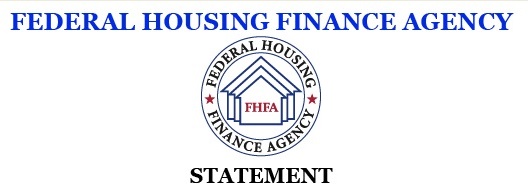
July 27th, 2011
FHFA Sues UBS to Recover Losses to Fannie Mae and Freddie Mac
Washington, DC – The Federal Housing Finance Agency (FHFA), as conservator for Fannie Mae and Freddie Mac (the Enterprises), has filed a lawsuit in the federal district court for the Southern District of New York against UBS Americas, Inc., and related defendants alleging violations of federal securities laws in the sale of residential private-label mortgage-backed securities (MBS) to the Enterprises. FHFA seeks to recover losses and damages sustained by the Enterprises as a result of their investments in UBS Securities.
The lawsuit alleges that UBS Americas made numerous material misstatements and omissions about the mortgage loans underlying the private-label MBS, including the creditworthiness of the borrowers and the quality of the origination and underwriting practices used to evaluate and approve such loans. The defendants also failed to conduct adequate due diligence. This lawsuit seeks to recoup the losses suffered by the Enterprises related to their $4.5 billion investment in securities sold by UBS.
As conservator of Fannie Mae and Freddie Mac, FHFA is charged with preserving and conserving the assets of the Enterprises. Through this lawsuit and additional lawsuits expected to follow, FHFA seeks to recover losses suffered by the Enterprises in connection with the Enterprises’ investments in private-label securities.
“FHFA is taking this action consistent with our responsibilities as conservator of each Enterprise,” said FHFA Acting Director Edward J. DeMarco. “From the issuance of 64 subpoenas last year to the filing of this lawsuit and further actions to come, we continue to seek redress for the losses suffered by the Enterprises.”
The defendants named in the lawsuit are UBS Americas, Inc., UBS Real Estate Securities Inc., UBS Securities, LLC, Mortgage Asset Securitization Transactions, Inc., and former UBS executives David Martin, Per Dyrvick, Hugh Corcoran, and Peter Slagowitz.
Article
08/01/11 Categories: Article
More UAD FAQs
by Tom Kirchmeyer, SRA of Kirchmeyer Klips
As of August 1, 2011, we will be delivering UAD compliant appraisal reports to some of our lender clients that have requested an early start in order to get used to the new format. Appraisers are REQUIRED to submit UAD compliant appraisal reports on inspections effective September 1, 2011.
Here are a few more UAD FAQs:
Question: Where is the name of an AMC involved in an appraisal assignment reported?
Answer: The AMC name must be reported on Page 6 of the appraisal report in the “Name” field under “Lender/Client”. The “Lender/Client” field on Page 1 of the appraisal report should be used for the lender only.
My take: We will no longer require that this statement be included on the report: “This appraisal was completed for KA on behalf of [lender]”.
Question: The UAD requires the distance between the subject property and the comparable properties to be reported in miles with a directional indicator. How does this apply to properties that are located in the same building or in very close proximity to each other (i.e., the subject and the comparable property are condominium units located within the same building)?
Answer: In cases where the subject property and comparable property are located in the same building, the distance is to be reported in miles. However, in such cases a directional indicator is not required. For example, for condominium units located in the same building, the required distance for this field could be reported as “0 miles”, “0.0 miles” or “0.00 miles.” For properties that are located in very close proximity to each other, but not in the same building (such as adjoining properties or properties located across the street from each other), the distance is reported in miles with a directional indicator. For adjoining properties, a correct entry for the required distance and a directional indicator could be similar to the following examples: "0.01 mile W" or "0.04 mile NE."
My take: You will no longer see “same street” or “3 blocks north”.
Question: Can the UAD be applied to the other GSE appraisal report forms?
Answer: Yes. The UAD specifications may be applied to the other GSE appraisal forms, where applicable, if required by the client. However, an explanation of any standardized ratings/definitions, abbreviations, and formatting must be included in the appraisal report or an addendum.
My take: I think it’s a great idea to have the appraiser continue using the UAD Quality and Condition ratings on other non-UAD compliant forms such as the 2-4 family, co-op, and manufactured home forms. As long as the appraiser includes the rating descriptions in the report, the lender and borrower will understand. I do think the new rating system for Q and C is better than the existing (old) system of average, average(+), fair, etc. And let's face facts: nobody ever truly understood what average meant!
Thomas J. Kirchmeyer, SRA is President of Kirchmeyer and Associates of Buffalo, NY. His Kirchmeyer Klips are popular with real estate professionals throughout the country. Click here for more information: http://www.kirchmeyer.com/index.asp?pid=64
Email Tom directly at: tk@kirchmeyer.com
by Tom Kirchmeyer, SRA of Kirchmeyer Klips
As of August 1, 2011, we will be delivering UAD compliant appraisal reports to some of our lender clients that have requested an early start in order to get used to the new format. Appraisers are REQUIRED to submit UAD compliant appraisal reports on inspections effective September 1, 2011.
Here are a few more UAD FAQs:
Question: Where is the name of an AMC involved in an appraisal assignment reported?
Answer: The AMC name must be reported on Page 6 of the appraisal report in the “Name” field under “Lender/Client”. The “Lender/Client” field on Page 1 of the appraisal report should be used for the lender only.
My take: We will no longer require that this statement be included on the report: “This appraisal was completed for KA on behalf of [lender]”.
Question: The UAD requires the distance between the subject property and the comparable properties to be reported in miles with a directional indicator. How does this apply to properties that are located in the same building or in very close proximity to each other (i.e., the subject and the comparable property are condominium units located within the same building)?
Answer: In cases where the subject property and comparable property are located in the same building, the distance is to be reported in miles. However, in such cases a directional indicator is not required. For example, for condominium units located in the same building, the required distance for this field could be reported as “0 miles”, “0.0 miles” or “0.00 miles.” For properties that are located in very close proximity to each other, but not in the same building (such as adjoining properties or properties located across the street from each other), the distance is reported in miles with a directional indicator. For adjoining properties, a correct entry for the required distance and a directional indicator could be similar to the following examples: "0.01 mile W" or "0.04 mile NE."
My take: You will no longer see “same street” or “3 blocks north”.
Question: Can the UAD be applied to the other GSE appraisal report forms?
Answer: Yes. The UAD specifications may be applied to the other GSE appraisal forms, where applicable, if required by the client. However, an explanation of any standardized ratings/definitions, abbreviations, and formatting must be included in the appraisal report or an addendum.
My take: I think it’s a great idea to have the appraiser continue using the UAD Quality and Condition ratings on other non-UAD compliant forms such as the 2-4 family, co-op, and manufactured home forms. As long as the appraiser includes the rating descriptions in the report, the lender and borrower will understand. I do think the new rating system for Q and C is better than the existing (old) system of average, average(+), fair, etc. And let's face facts: nobody ever truly understood what average meant!
Thomas J. Kirchmeyer, SRA is President of Kirchmeyer and Associates of Buffalo, NY. His Kirchmeyer Klips are popular with real estate professionals throughout the country. Click here for more information: http://www.kirchmeyer.com/index.asp?pid=64
Email Tom directly at: tk@kirchmeyer.com






